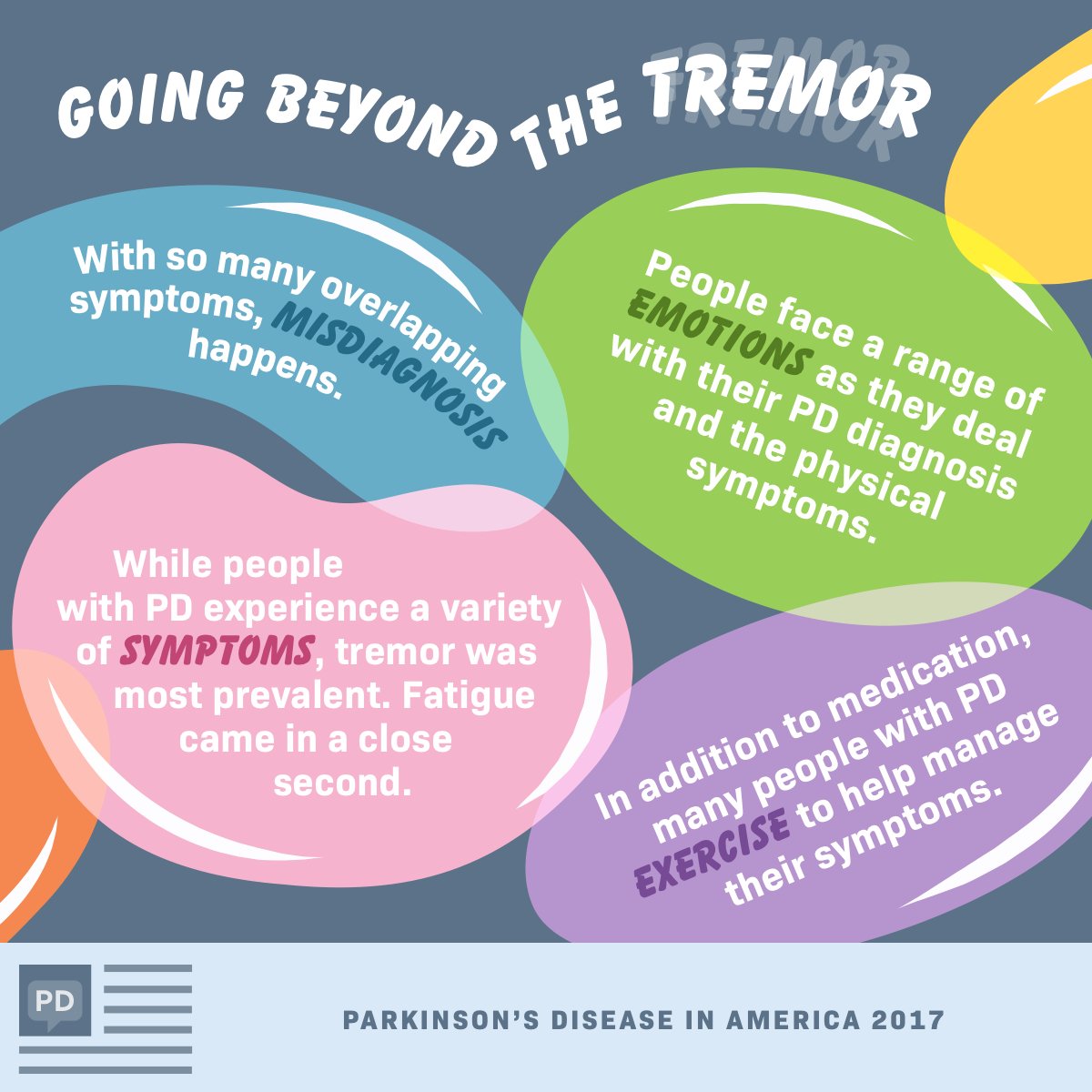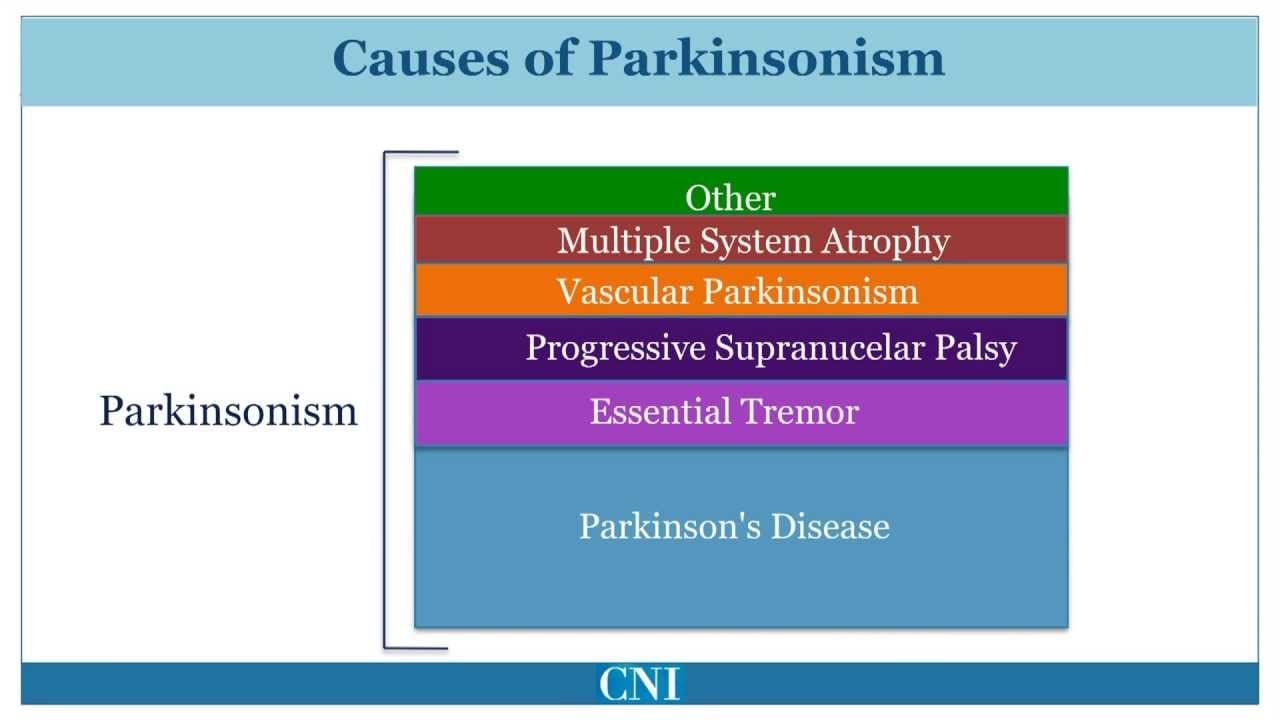Prognosis Of Parkinson’s Disease
Reading time:
A non-complicated Parkinsons disease with a good prognosis, does not shorten life expectancy. The main factors that determine a poor short-term prognosis, including an increase in mortality in the advanced disease phase, are severe dysphagia, dementia, or frequent falls with fractures.
Stage Two Of Parkinsons Disease
Stage two is still considered early disease in PD, and it is characterized by symptoms on both sides of the body or at the midline without impairment to balance. Stage two may develop months or years after stage one.
Symptoms of PD in stage two may include the loss of facial expression on both sides of the face, decreased blinking, speech abnormalities, soft voice, monotone voice, fading volume after starting to speak loudly, slurring speech, stiffness or rigidity of the muscles in the trunk that may result in neck or back pain, stooped posture, and general slowness in all activities of daily living. However, at this stage the individual is still able to perform tasks of daily living.
Diagnosis may be easy at this stage if the patient has a tremor however, if stage one was missed and the only symptoms of stage two are slowness or lack of spontaneous movement, PD could be misinterpreted as only advancing age.
Slowness Of The Movement
Due to the lack of Dopamine, the signals from the brain to the muscles slowdown, that leads to Bradykinesia Bradykinesia slows down day to day activities of the patient, such as walking, bathing or dressing etc, and this is very disabling as it interferes routine life style. The patient may begin to shuffle and their walking steps become shorter and shorter and more likely they will have problems like starting and stopping and turning while walking and some patients may feel to be falling forward. All these walking complications are known as Parkinsons gait. Bradykinesia is considered to be a hallmark of basal ganglia disorders, and it includes difficulties with planning, initiating and executing movement and with performing sequential and simultaneous tasks .
You May Like: Is Thumb Twitching A Sign Of Parkinson’s
Motor Neuron And Dopamine Controls
The motor disability symptoms of Parkinsons disease result from the loss of dopamine – secreting pigmented cells, in the pars compacta region of the substantia nigra . The substantia nigra is a very small area located deep within the brain and in PD patients these dopaminergic neural cells of substantia nigra degenerates and dies, only few live neurons in this region are observed in PD brain tissues than in the normal brain tissue. The loss of dopaminergic neurons leads to the loss of dopamine and dopamine is the major neurotransmitter which relays neuronal signals from the brain to other motor centers. The lack of dopamine in PD patients disturbs the movement control of the patients and mood, behavior, thinking and sensation of the patients .
Parkinsons Disease Treatment: What Are My Options

There are various treatment options for Parkinson’s disease. After you receive a formal Parkinson’s diagnosis, your doctor will explore these possibilities with you. Common Parkinson’s disease treatment options include:
- Medication
- Home remedies for Parkinson’s
- Lifestyle changes
Your doctor may recommend one medication or a combination of Parkinson’s disease treatments. Your course of treatment will depend on various factors, such as:
- Any other medical conditions in you or your family
- Other prescribed medications
- Your age and overall health status
Before you and your doctor can decide which treatment is right for you, you will need to explore treatment options for Parkinson’s disease in more detail.
Read Also: Using Cbd For Parkinson’s Disease
Is Early Diagnosis Possible
Experts are becoming more aware of symptoms of Parkinsons that precede physical manifestations. Clues to the disease that sometimes show up before motor symptoms and before a formal diagnosis are called prodromal symptoms. These include the loss of sense of smell, a sleep disturbance called REM behavior disorder, ongoing constipation thats not otherwise explained and mood disorders, such as anxiety and depression.
Research into these and other early symptoms holds promise for even more sensitive testing and diagnosis.
For example, biomarker research is trying to answer the question of who gets Parkinsons disease. Researchers hope that once doctors can predict that a person with very early symptoms will eventually get Parkinsons disease, those patients can be appropriately treated. At the very least, these advances could greatly delay progression.
Parkinson’s Disease and Movement Disorders Center
Our center provides compassionate and timely treatment to patients with movement disorders, such as dystonia, ataxia, essential tremor and similar conditions. But our mission goes beyond patient care excellence. By offering educational events and support groups, we empower patients and caregivers to become better partners in their health.
Complications Related To Parkinson’s Can Affect Survival
Claudia Chaves, MD, is board-certified in cerebrovascular disease and neurology with a subspecialty certification in vascular neurology. She is an associate professor of neurology at Tufts Medical School and medical director of the Lahey Clinic Multiple Sclerosis Center in Lexington, Massachusetts.
Parkinson’s is a common neurodegenerative disease, and although it is not fatal, research suggests it may influence life expectancy.
A 2012 study in Archives of Neurology examined the six-year survival of nearly 140,000 Medicare beneficiaries with Parkinson’s disease in the United States. During the six-year period, 64% of the participants with Parkinson’s disease passed away.
The risk of death of those with Parkinson’s was then compared to Medicare beneficiaries who did not have Parkinson’s or any other common diseases, including:
When controlling for variables like age, race, and gender, the six-year risk of death among people with Parkinson’s was found to be nearly four times greater than those Medicare beneficiaries without the disease or other common diseases.
At the same time, the rate of death among those with Parkinson’s disease was similar to those with hip fracture, Alzheimer’s dementia, or a recent heart attackalthough it was higher than those who had been newly diagnosed with either colorectal cancer, stroke, ischemic heart disease, or chronic obstructive pulmonary disease.
Also Check: 1st Sign Of Parkinson’s
Home Remedies And Lifestyle Changes
In addition to exercising and taking medication, your doctor may suggest you adjust your lifestyle to help you control your symptoms, Positive lifestyle changes include healthy eating, drinking plenty of fluids and attending Parkinsons support groups. You may also want to research home remedies such as massage, tai chi and yoga all of which can be helpful to those with Parkinson’s disease.
How Is Psp Different From Parkinson’s Disease
PSP is often misdiagnosed as Parkinsons disease, especially early in the disorder, as they share many symptoms, including stiffness, movement difficulties, clumsiness, bradykinesia , and rigidity of muscles. The onset of both diseases is in late middle age. However, PSP progresses more rapidly than Parkinsons disease.
- People with PSP usually stand exceptionally straight or occasionally tilt their heads backward . This is termed axial rigidity. Those with Parkinson’s disease usually bend forward.
- Problems with speech and swallowing are much more common and severe in PSP than in Parkinson’s disease and tend to show up earlier in the disease.
- Eye movements are abnormal in PSP but close to normal in Parkinson’s disease.
- Tremor is rare in PSP but very common in individuals with Parkinsons disease.
Although individuals with Parkinson’s disease markedly benefit from the drug levodopa, people with PSP respond minimally and only briefly to this drug.
People with PSP show accumulation of the protein tau in affected brain cells, whereas people with Parkinsons disease show accumulation of a different protein called alpha-synuclein.
Also Check: Patch For Parkinson’s Disease
Depression May Be An Early Symptom Of Parkinsons
Depression is one of the most common, and most disabling, non-motor symptoms of Parkinsons disease. As many as 50 per cent of people with Parkinsons experience the symptoms of clinical depression at some stage of the disease. Some people experience depression up to a decade or more before experiencing any motor symptoms of Parkinsons.
Clinical depression and anxiety are underdiagnosed symptoms of Parkinsons. Researchers believe that depression and anxiety in Parkinsons disease may be due to chemical and physical changes in the area of the brain that affect mood as well as movement. These changes are caused by the disease itself.
Here are some suggestions to help identify depression in Parkinsons:
- Mention changes in mood to your physician if they do not ask you about these conditions.
- Complete our Geriatric Depression Scale-15 to record your feelings so you can discuss symptoms with your doctor. Download the answer key and compare your responses.
- delusions and impulse control disorders
Support For People With Parkinsons Disease
Early access to a multidisciplinary support team is important. These teams may include doctors, physiotherapists, occupational therapists, speech therapists, dietitians, social workers and specialist nurses. Members of the team assess the person with Parkinsons disease and identify potential difficulties and possible solutions.There are a limited number of multidisciplinary teams in Victoria that specialise in Parkinsons disease management. But generalist teams are becoming more aware of how to help people with Parkinsons disease.
Don’t Miss: What Are The Initial Symptoms Of Parkinson’s Disease
How Do Symptoms Progress
The most common symptoms of Parkinson’s are tremor, rigidity and slowness of movement.
Not everyone with Parkinson’s experiences the same combination of symptoms they vary from person to person.
Also, how Parkinson’s affects someone can change from day to day, and even from hour to hour. Symptoms that may be noticeable one day may not be a problem the next.
Many of the symptoms can be treated or managed with medication and therapies.
Many people with Parkinson’s lead active and fulfilling lives. An important part of coping with Parkinson’s is understanding how it affects you and how to work around it.
It may not always be easy to maintain a positive outlook, especially immediately after diagnosis. But we can give you help and support.
Parkinsons Disease Treatment And Prognosis

If you are newly diagnosed, you might be anxious to learn about the different types of Parkinson’s disease treatments, as well as their efficacy and side-effects. While there is no cure for Parkinson’s disease, the right treatment can help control your symptoms and improve your quality of life. With this in mind, which is the best Parkinson’s disease treatment for you, and could it affect your prognosis?
Don’t Miss: What Medications Are Used To Treat Parkinson’s Disease
Role Of Pet Scans In Diagnosis
Scanning for loss of dopamine, the major chemical responsible for some symptoms of Parkinsons, permits comparison against scans of people who have no dopamine deficiency. By itself, a scan does not make the diagnosis of Parkinson’s but identifies the decline in dopaminergic neurones. It is used by experienced neurologists in cases where the diagnosis of Parkinsons is uncertain.Scans include radionuclide positron emission tomography or by injecting radiopharmaceutical agent in the brain) into a patients veins in a procedure referred to single photon emission computed tomography imaging.
PET scans typically focus on glucose metabolism, and DaT/SPECT scans focus on the activity of the dopamine transporter. Unfortunately, this decline is seen in conditions other than Parkinsons such as Multiple Systems Atrophy and Progressive supranuclear palsy .
What Doctors Look For When Diagnosing Parkinsons
Certain physical signs and symptoms noticed by the patient or his or her loved ones are usually what prompt a person to see the doctor. These are the symptoms most often noticed by patients or their families:
-
Shaking or tremor: Called resting tremor, a trembling of a hand or foot that happens when the patient is at rest and typically stops when he or she is active or moving
-
Bradykinesia: Slowness of movement in the limbs, face, walking or overall body
-
Rigidity: Stiffness in the arms, legs or trunk
-
Posture instability: Trouble with balance and possible falls
Once the patient is at the doctors office, the physician:
-
Takes a medical history and does a physical examination.
-
Asks about current and past medications. Some medications may cause symptoms that mimic Parkinsons disease.
-
Performs a neurological examination, testing agility, muscle tone, gait and balance.
Recommended Reading: What Other Diseases Mimic Parkinson’s
How Is Parkinsons Disease Diagnosed
Diagnosing Parkinsons disease is sometimes difficult, since early symptoms can mimic other disorders and there are no specific blood or other laboratory tests to diagnose the disease. Imaging tests, such as CT or MRI scans, may be used to rule out other disorders that cause similar symptoms.
To diagnose Parkinsons disease, you will be asked about your medical history and family history of neurologic disorders as well as your current symptoms, medications and possible exposure to toxins. Your doctor will look for signs of tremor and muscle rigidity, watch you walk, check your posture and coordination and look for slowness of movement.
If you think you may have Parkinsons disease, you should probably see a neurologist, preferably a movement disorders-trained neurologist. The treatment decisions made early in the illness can affect the long-term success of the treatment.
What Is My Parkinsons Disease Prognosis
The outcome of Parkinsons disease varies from person to person, though women with the disorder tend to live longer than men. If you or a loved one has recently been diagnosed with Parkinsons, you may be wondering about the course of your illness and your life expectancy. While there is no definitive prognosis for Parkinsons, most doctors agree that the disease itself is not fatal. Health complications such as deep vein thrombosis and arterial blockage in the lungs can, however, shorten your lifespan with the condition, regardless of your age or gender.
These possible health complications may sound scary, but as long as you seek treatment, your life expectancy with Parkinsons disease shouldnt differ much from that of the general population.
You May Like: Does Parkinson’s Cause Weight Gain
What Are The Different Stages Of Parkinsons Disease
Each person with Parkinsons disease experiences symptoms in in their own unique way. Not everyone experiences all symptoms of Parkinsons disease. You may not experience symptoms in the same order as others. Some people may have mild symptoms others may have intense symptoms. How quickly symptoms worsen also varies from individual to individual and is difficult to impossible to predict at the outset.
In general, the disease progresses from early stage to mid-stage to mid-late-stage to advanced stage. This is what typically occurs during each of these stages:
Early stage
Early symptoms of Parkinsons disease are usually mild and typically occur slowly and do not interfere with daily activities. Sometimes early symptoms are not easy to detect or you may think early symptoms are simply normal signs of aging. You may have fatigue or a general sense of uneasiness. You may feel a slight tremor or have difficulty standing.
Often, a family member or friend notices some of the subtle signs before you do. They may notice things like body stiffness or lack of normal movement slow or small handwriting, lack of expression in your face, or difficulty getting out of a chair.
Mid stage
Mid-late stage
Standing and walking are becoming more difficult and may require assistance with a walker. You may need full time help to continue to live at home.
Advanced stage
New Diagnostic Standards For Parkinsons
Until recently, the gold-standard checklist for diagnosis came from the U.K.s Parkinsons Disease Society Brain Bank. It was a checklist that doctors followed to determine if the symptoms they saw fit the disease. But thats now considered outdated. Recently, new criteria from the International Parkinson and Movement Disorder Society have come into use. This list reflects the most current understanding of the condition. It allows doctors to reach a more accurate diagnosis so patients can begin treatment at earlier stages.
Also Check: Israeli Treatment Of Parkinson Disease
How Is Parkinsons Disease Dementia Diagnosed
No single test can diagnose Parkinsons disease dementia. Instead, doctors rely on a series or combination of tests and indicators.
Your neurologist will likely diagnose you with Parkinsons and then track your progression. They may monitor you for signs of dementia. As you get older, your risk for Parkinsons dementia increases.
Your doctor is more likely to conduct regular testing to monitor your cognitive functions, memory recall, and mental health.
Will Parkinsons Disease Treatment Affect My Prognosis

While no treatment will affect your Parkinson’s disease prognosis, many patients find that a combination of medication, physical therapy and positive lifestyle changes help them control the symptoms of Parkinson’s even in the late stages of the disease.
If you have any questions about your diagnosis or you’re concerned about your treatment options, talk to your doctor. You can also seek advice and support from the National Parkinsons Foundation Helpline by calling 1-800-4PD-INFO .
Don’t Miss: How Is Parkinson’s Disease Associated With Headaches
Caring For Your Health With Parkinson’s Disease
In addition to caring for your Parkinson’s health, it is also important to care for your overall health. This means visiting your primary care physician periodically for preventive care like the annual flu shot and cancer screeningsfor example, a mammogram for breast cancer screening and a colonoscopy for colon cancer screening.
A primary care physician can also evaluate for risk factors related to heart attacks and strokes, and provide counseling on exercise, smoking, alcohol use, depression, or other mental health concerns. Regular visits to your primary care physician or neurologist will also allow them to catch bacterial infections like urinary tract infections before they get serious.
Contact Our Information And Referral Helpline
The Parkinson Canada Information and Referral Helpline is a toll-free Canada-wide number for people living with Parkinsons, their caregivers and health care professionals. We provide free and confidential non-medical information and referral services. When you have questions or need assistance, our information and referral staff help connect you with resources and community programs and services that can help you. We provide help by phone or email, Monday to Friday, 9:00 a.m. 5:00 p.m. ET.
Read Also: Parkinson’s And Muscle Cramps